Don't wanna be here? Send us removal request.
Text
RESEARCH -- Guy Debord and the Society of the Spectacle (1967)
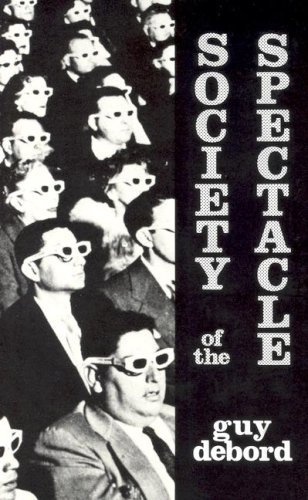
Debord was a French theorist, philosopher, filmmaker, and member of the Letterist International and a founding member of the Situationist International (SI). Debord and a group of avant-grade artists and political theorists formed the SI. He is best known for his work La société du spectacle (The Society of the Spectacle), published in 1967.
In The Society of the Spectacle, Debord describes the spectacle as a tool for capitalism to distract and pacifying the ‘masses’. This can refer to any screen and ads that we see everywhere - it’s things that we see everywhere which can influence what we wear, what we think, what we should like, etc. It creates a notion of obsessing with one’s appearance and it is unhealthy. There is a line between what is real and what isn’t, but sometimes it’s blurred. How we present ourselves online is way more important than our mental health and it’s degrading our lives; there is literally more than what we see on social media. Having to keep up with trends is really exhausting and this is what the capitalism does to you. It sets a standard for everyone and doing things which aren’t ‘normal’ to society are frowned upon; it is fitting into a mold which is important. “Wherever there is independent representation, the spectacle continues itself.” (19)
This book is really interesting and I was really intrigued on why the May ‘68 demonstrations were inspired by the SI. Constructing situations from the existing ideas expresses the concept of disapproval. It was a really hard book to read. It’s shocking how it’s still relevant in the 21st century. Capitalism is what we see around us and what is really interesting is that the signs and symbols used in protests are capitalized and fed into consumer culture. Protest phrases can be seen on shirts and this can become a trend. Even the concept of DIY from the punk subculture is capitalized. With this, it feels like people should get it and it will satisfy them, when in reality, it’s just a piece of clothing that they need to survive. “The commodity is this factually real illusion, and the spectacle is its general manifestation.” (48) Even so, is capitalism the reason why signs and symbols, from protests many decades ago, are still used in today’s visual language of resistance? Or is it because of the spectacle that makes these things the things we see in our daily lives and hence, keep utilizing them in our posters when protesting - the presentation, the aesthetic, the words?
“The anarchists have an ideal to realize” (92) Debord talks a little on anarchism and he tells us how it is an ideology of contradicting the state and classes. This is clear as to why punk subculture is the way it is. There is a connection between Debord and punk, because of Malcolm McLaren.
1 note
·
View note
Text
RESEARCH -- Situationist International (SI)
The Situationist International (1952-1972) was a group - emerged from Lettrism, which was inspired by Dadaism, Surrealism, and Marxism, that was made up of artists, intellectuals, and political theorists, based in Paris. They brought together different ideas and media to explore various and new techniques of engagement in cultural protest and revolutionary praxis. They experimented with the concept of creating situations which fulfils a particular desire. A development of a critique of capitalism based on a mixture of Marxism and surrealismThe SI have shaped the the relationship between art and politics in postwar culture, including ones in 1968 and 1977. They published a journal called Internationale Situationniste (IS) and also had two other texts that was published by members of the SI to understand the theory better - The Society of the Spectacle by Guy Debord and The Revolution of Everyday Life by Raoul Vaneigem.
The movement did not produce a lot of artworks, but the theories and concepts that were developed by the SI has impacted many art movements for a long time, and ideas are still evident in some pieces. it has basically rejected all kinds of art movements that were ‘autonomous and detached from politics. Some stuff they did were the psychogeography, performance art and graffiti. Public spaces were used and altered to spread their messages to the public (protest themes). Some other techniques that developed in the works of the SI were détournement, collage and hypergraphy. The misappropriation of contents (comics, posters and publications), covering up existing art and merging texts and graphics are still apparent in today’s works - and this includes protests, virtually and physically. As mentioned, the SI influenced the May 1968 demonstrations, which some of the members participated in the occupations and protests. The graffiti that was visible in Paris used direct quotes from Debord’s The Society of the Spectacle and paraphrasing some ideas of the SI. The SI also influenced many ‘anarchist’ cultures of punk and cyberpunk and many art and postmodern theories. These methods that were initiated by the members of the SI were popularized by the punk subculture and has been synonymous to them. The emergence of punk subculture was inspired by the SI, establishing many visual parallels and also having the same ideologies - Malcolm McLaren embraced situationist ideas, clothes designed by Vivienne Westwood and artworks by Jamie Reid.
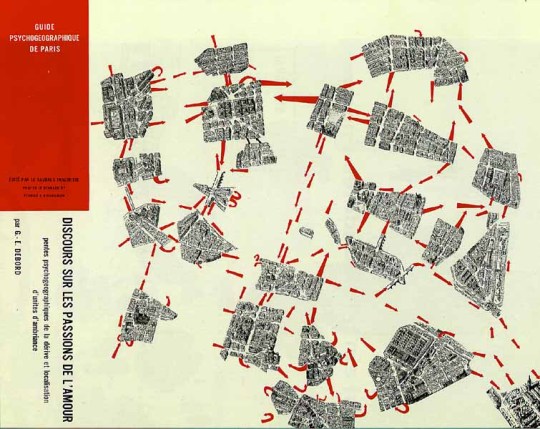
Psychogeographique de Paris - Guy Debord, 1957
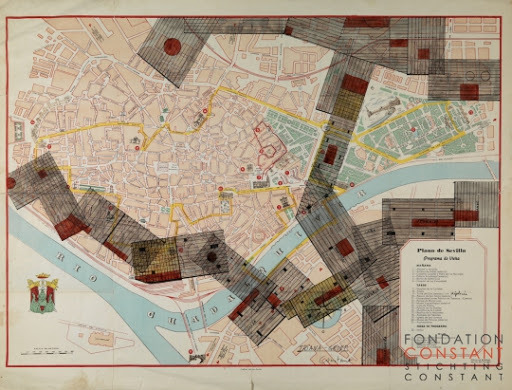
New Babylon/Sevilla TRIANA-GROEP - Constant Nieuwenhuys, 1965
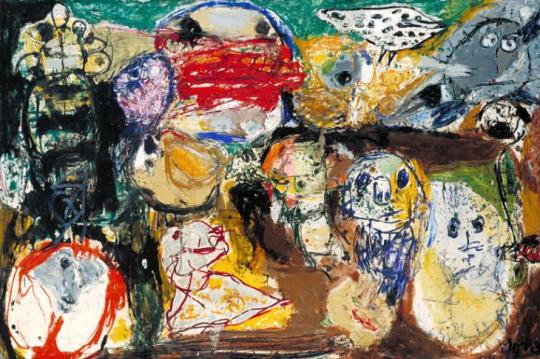
Asger Jorn - Letter to my Son, 1956-7

Situationist Détournement
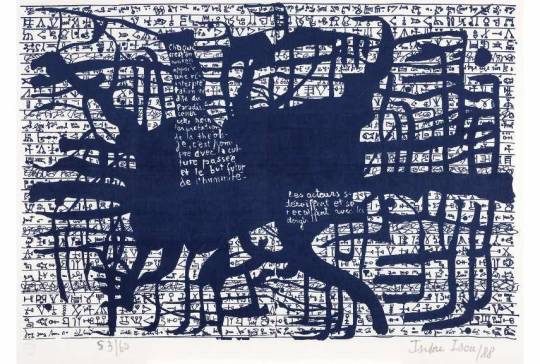
Isidore Isou - Hypergraphie, 1964

Mémoires - Asger Jorn, 1959
6 notes
·
View notes
Photo

Amidst the art of May 68: L'Atelier Populaire de Paris
71 notes
·
View notes
Photo










French anti-capitalist posters produced following the May 68 Paris uprising.
3K notes
·
View notes
Text
RESEARCH -- Chris Ashworth
Chris Ashworth is a British designer who was an art director at Ray Gun iin 1997. He, like Weingart, created a new language too, which he called ‘Swiss Grit’, where things are very experimental and free from the rules of graphic design. His works include a lot of DIY methods where a lot fo different materials are stusk on top of each other. A lot of his works are done by hand and I really admire the things he posts on Instagram called Not From the Archives.




0 notes
Text
RESEARCH -- Wolfgang Weingart
Born near the Swiss border of Germany, in the Salem Valley, Woflgang Weingart was known to be the ‘father of Swiss Punk Typography’. He learned so much about setting type in letterpress and this helped him when coming up with his own designs. He was very experimental in his works and tend to push the boundaries of typography. He created his own kind of language and taught many students in his workshops to break traditional rules of graphic design.
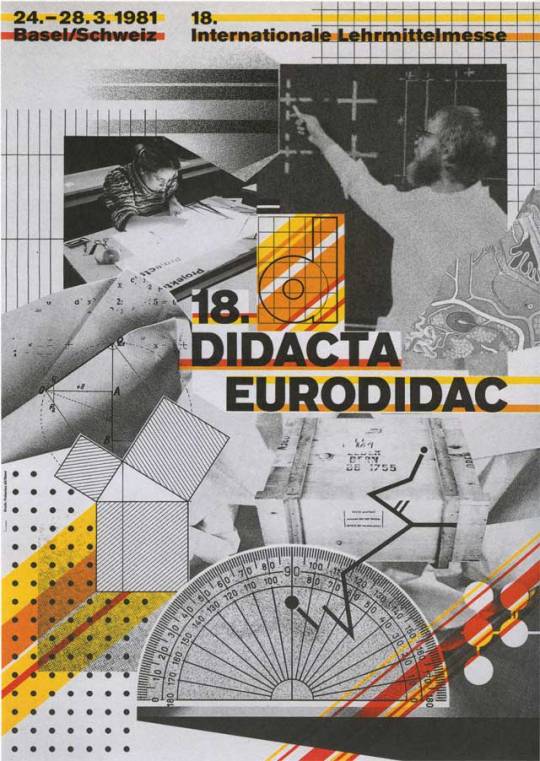

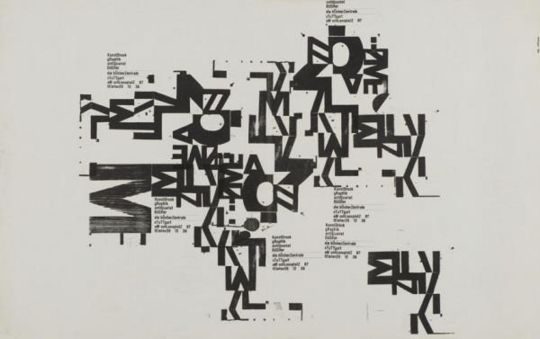
0 notes
Text
READING -- Design Without Designers // That’s Entertainment!
Design is constantly changing and in these two essays, it explores the various ways of how design can be delivered to the world. The way a syllabus is planned throughout the year is also design, if you think about it. If design we learn is about the history, rules or methods, what is design to others? Some people might incorporate deisgn, subconsciously, to what they do in their daily lives. So at the end of the day, is design, to a designer, just a service then? Or does it actually require intellectual and critical thinking? Do we collaborate or do we compete with each other, especially when you’re being very specific and specialized in this design world?
Also, social media is really big in this day and age and it’s a way of promoting one’s works. But also, if design requires a lot of intellectual thinking, are people just self-promoting or are they just putting their works out there proving that they can do things which, sometimes, does not have a deeper meaning to it? If rules doesn’t have to be followed, why should people be a certain way?
Text: Designers Without Design // That’s Entertainment!
0 notes
Text
RESEARCH -- Malcolm McLaren: Spectacular Failure podcast by Paul Gorman (2020)
This podcast really helped me a lot in understanding the ideas of Malcolm McLaren and how he was so significant in the punk scene. I was lucky enough to be able to access this because currently, I’m in another country. But it was a good podcast and the line that stuck to me was: “identity can be performed”. I thought that pretty much summed up every subculture that existed, however it isn’t the case these days. Some people still do that but the majority basically jump on many bandwagons to fit in. Punk isn’t like that; it was more or breaking the rules, refusing to conform to society’s expectations and most important, changed art into action. To him, if you never fit in, there wouldn’t be any competitions amongst each other.
Podcast link: https://www.bbc.co.uk/sounds/play/m000hmzx
0 notes
Text
RESEARCH -- Graphical Terrorism?: Bazooka, Punk and Leftist Politics at Libération Newspaper in 1970s France by Chris Warne (2013)
The Bazooka collective was formed in 1975 in the Beaux-Arts school in Paris. The key members were: Christian Chapiron (Kiki Picasso), Jean-Louis Dupre ́ (Loulou Picasso), Philippe Renault (Lulu Larsen), Olivia ‘Te ́le ́’ Clavel (Electric Clito), Philippe Bailly (Ti5 Dur), Bernard Vidal (Bananar), Jean Rouzaud and Dominique Fury. They published a series of fanzines and used techniques that we now recognize as ‘punk’. Most of the influences were from the May ’68 riots in Paris.
The punk scene in France, though, wasn’t getting enough attention as the ones in the UK and the US; it was like a connection between the creative and political sides.
These some pages from the newspaper, Libération, that were done by members of the Bazooka collective.




0 notes
Text
RESEARCH -- Anarchy, Pop and Violence: Punk Rock Subculture and the Rhetoric of Class, 1976-78 by D. Simonelli (2002)
Simonelli discussed about the punk subculture and also touched a little on Malcolm McLaren. I thought this was an intersting read because I learnt more about ounk in general.
Malcolm McLaren was fascinated by Situationist International, which had influenced a lot of the May ‘68 riots in Paris. Much of the ideology was similar - generating situations as a way of response to the society. REVOLUTION was the word that was used by many Situationists to describe ‘changes in everything from pop charts to the overthrow of the monarchy’. The Sex Pistols, who was managed by McLaren, inspired many to fuse avant-gard art with commercial culture.
A lot of commodities were used to represent the damages of a socity: safety pins, clips, ripped shirts, chains, etc. Punks loved the idea of being offensive and to respond to the society and it felt, for them, that they were living in a bankrupt society. Punk was all about protest, not change. Some things could get too far - Nazi symbols were used to attract attention to social problems.
0 notes
Text
READING -- Can Designers Save the World Without Creating More Stuff?
Sustainability is a broad topic and I believe that designers can be sustainable when it comes to the process of designing things. Printing, for sure, isn’t sustainable and there could be many copies just laying there untouched. It is eventually being thrown away. To avoid this, a lot of people may think that they should shift to producing things digitally, but is that even sustainable? Even so, there are many things designers want to experiment with that can help save the world. Would raising awareness about saving the world be sustainable? We, as designers, should put this thought in our design processes so we can think about the planet.
Text: Can Designers Save the World Without Creating More Stuff?
0 notes
Text
READING -- Ten Footnotes to a Manifesto
I agreed with some points Michael Beirut brought up in Ten Footnotes to a Manifesto which is part of his book, Seventy-Nine Short Essays on Design. I really want to read this book, when I have the opportunity, as it can broaden my perspective on design. I thought this essay, in particular, was very interesing.
Apparently, some people who signed the manifesto didn’t do any branding work. So what is fair to say what they preached? The advertising world is diverse and there are many ways for someone to advertise their works or their thoughts to the public. We use this platform of advertising to communicate and culturize with others; this is the time where everyone is putting themselves out in the world and informing people what they do. If designers didn’t exist, who’s going to design anything and if a random person did it, would it look as appealing to the public eye? We, as designers, have the power to shape the world - it, somehow, feeds into consumerism as designer help companies promote their products to the masses. Beirut also sid that, designer shoudl be making and designing something that suits the target audience but never lie to them about the products.
At the end of the day, the public is our clients and we, technically, work them. If money is our main goal for working, it’s hard; if you do what you love, is easy.
Text: Ten Footnotes to a Manifesto
0 notes
Text
READING -- White Night Before A Manifesto
I believe this was a book divided into three parts - ‘Surface’, ‘Value’ and ‘Before A Manifesto’. It was an interesting read as I thought that it touches some topics that revolve around the 21st century - technology, services, value.
It talks about the phone or the credit card where sometimes, it isn’t the actual thing but what is written on or featured in the object changes our perspective. I thought the example of the phone was really good; it serves a lot of function and at the end of the day, do we need a separate calendar or a watch? It somehow makes our lives easier but also decrease the amount of interaction we have with people in real life. It is now a symbol of absence - people may not see it but personally, I feel like we are more distant than ever. Everything is done online, from talking to shopping.
What is valuable to people? Is it the design or the logo? Most of the things people buy at the moment come down to the brand and not the production of it. Only a fraction of people might care about the materials.
“Design has become the creation and management of virtual assets attached to objects (like tags, or services) or existing within objects (like worlds, or doorways).”
The last part of this book talks about manifestos and what makes it sound like one. A lot of the manifestos we see are published online. However, according to the text, it sometimes doesn’t feel official anymore because anything that is published online has a lower status than it originally has. People can edit it too.\
Text: White Night Before A Manifesto
0 notes
Text
RESEARCH -- Punk, Politics and British (fan)zines, 1976–84: ‘While the world was dying, did you wonder why?’ by Matthew Worley (2015)
When we talk about fanzines, punk fanzines to be specific, Sniffin’ Glue would be the first thing that would come up. It characterizes punk to be ‘rock in its lowest form - on the level of the streets’. Besides, Sniffin’ Glue, there were hundreds of zines that emerged from different parts of the UK. Many of these zines followed the techniques that Sniffin’ Glue did, but in their own unique ways. Some even incorporated colours!
Jamie Reid had influenced Malcolm McLaren and Helen Wallington-Lloyd when he was in Croydon Art School, because of the Sex Pistols album art. This was a really famous album art and is still very synonymous to punk. It’s easier to say that people will think of the Sex Pistols when we talk about punk in general. The album art used détourned media graphics and concepts which were much related to the Situaionist movement. I think it’ll be really interesting to look at art from different movements that influenced the designers who utilized the DIY ethos in their works. Also, Crass became a huge influence in punk fanzines later on so it’ll be nice to look at what kind of impact was made to the punk subculture.
0 notes
Text
RESEARCH -- "Killersatellit" and Randerscheinung : Punk and the Prenzlauer Berg by Seth Howes (2013)
I found this essay to be very interesting. Most of the time, when we read about punk, it is usually set in the UK or the US so it was really interesting to see what the punk scene looked like in other parts of the world. This essay focused on artists or musicians who were influenced by the punk scene.
People were inspired when Sideburns released an issue that included the famous, “This is a chord. This is another. This is a third. Now form a band.” A lot of the West German punk bands in the 70s wanted to mimic the Sex Pistols, but the other half took this influence of DIY and formed bands singing and addressed political issues in German. East German artists like Bert Papenfuß, Cornelia Scheime and Sascha Anderson who incorporated punk’s aesthetics into different forms of art. Punk’s home in Germany was basically situated in Prenzlauer Berg, an East Berlin district.
The DDR von Unten/eNDe was the first East German punk record released in West Germany. It basically blends punk with the aesthetics of Prenzlauer Berg. It featured a handpainted figure with the balance sheet. It creates a punk bricolage. This was considered both Prenzlauer Berg art and also punk art, it involved contrast and this goes a long with punk’s aesthetics of repurpose. Images below:


The Berührung ist nur eine Randerscheinung was sort of a collection of different works from different authors but every page looked different. A lot of the stuff created were experiments of typography, layouts and graphics and this included breaking a lot of the typography rules and distorting some words, together with cut and paste collages. I couldn’t find any images of the pages in the book but these were in the journal. Images below:


0 notes
Text
READING -- Women Graphic Designers
This was excerpt from an essay written by Ellen Lupton. I thought this text was inspiring as there are a lot of women graphic designers who has yet to be recognized. Most of the times, when we read about graphic design history, the works of many men are celebrated but where are the women behind it? Not all of them are were known what they’ve done but most are hidden. Credits are taken by men and women who assisted them are just known as their partner and nothing more.
A lot of names were mentioned in this essay and are being recognized for what they have done. Some women were leaders in the postmodern movement and shaped design, starting new trends and setting new standards but those were not noticed by the public.
We have access to the internet and now know more women graphic designers that have to be celebrated for their works.
Text: Women Graphic Designers
0 notes
Text
READING -- Ornament and Crime
Adolf Loos was a Austrian architect and was a big influence in European Modernist architecture. In this essay, Loos wrote about ornaments/decorative elements on objects.
“What is natural for a Papuan and a child, is degenerate for modern man.” Decorations are acceptable in some instances but modernist design shouldn’t have any excessive designs and should only be simple. Clean and simple designs have more meaning to them but to some people, it could look cheap. Designs in IKEA, for example, is clean and serves its functions. I mean, people have different perspectives on what people think is pleasing to their eyes.
Ornaments can be considered outdated and old-fashioned to Loos. Just like trends, ornaments are there to make things look prettier and it has no meaning, yet connection to the world or to anyone. In this case, everyone can be a designer - putting pretty things together, without a key message. Yes it does look pretty, but would people in the future enjoy it? Is it timeless or is it just pleasing to the eyes, only for that moment, in that era? Having to update something every now and then to fit in will cost a lot more money and a lot of waste.
Loos also mentioned about cost in his essay. Most of the things that are produced these days are really expensive, when you can get the same thing for a cheaper price at a different place. The amount that you pay for doesn’t cover all the work that someone did to put an object together. Taste really is problematic, and now no one knows what looks good or bad. Ornament is crime in so many ways.
Text: Ornament and Crime
0 notes